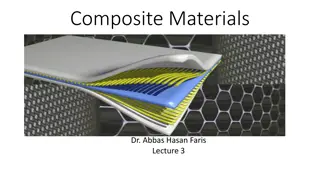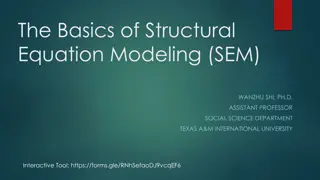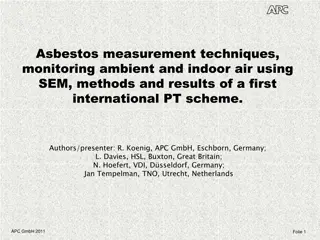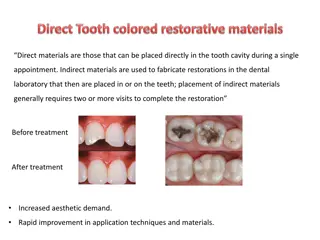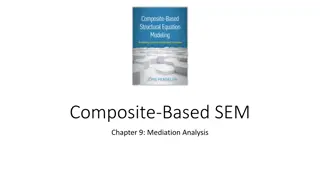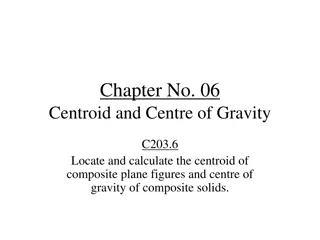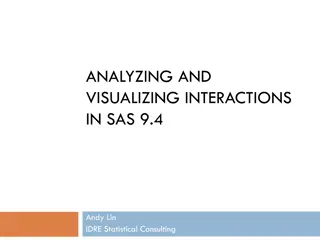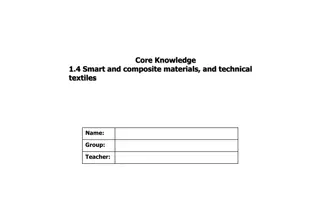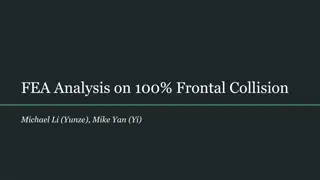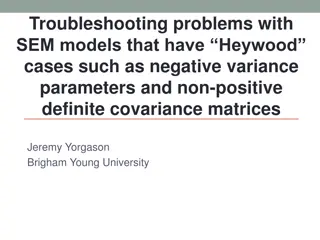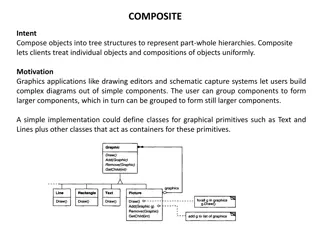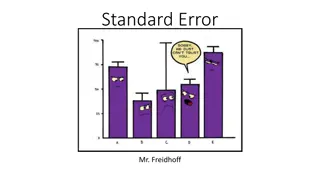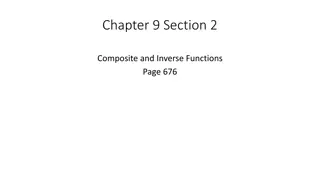Analyzing Interaction Effects in Composite-Based SEM
Explore the concept of interaction effects in composite-based structural equation modeling (SEM) through topics like the logic of interaction, estimating effects, multigroup analysis, and visualizing effects. Learn about moderators, their role in relationships between variables, and techniques for analyzing interaction effects using multigroup analysis. Consider group comparisons, minimal models, and alternative representations in understanding and interpreting these effects.
Download Presentation

Please find below an Image/Link to download the presentation.
The content on the website is provided AS IS for your information and personal use only. It may not be sold, licensed, or shared on other websites without obtaining consent from the author. Download presentation by click this link. If you encounter any issues during the download, it is possible that the publisher has removed the file from their server.
E N D
Presentation Transcript
Composite-Based SEM Chapter 11: Analyzing Interaction Effects
Topics The logic of interaction Estimating interaction effects with composite-based SEM Multigroup analysis The two-stage approach The orthogonalizing approach Visualizing interaction effects Surface analysis Spotlight analysis Floodlight analysis Three-way interactions Outlook: Nonlinear effects 2
What is a Moderator? In general terms, a moderator is a qualitative (e.g., sex, race, class) or quantitative (e.g., level of reward) variable that affects the direction and/or strength of the relation between an independent or predictor variable and a dependent or criterion variable. (Baron & Kenny 1986, p. 1174) 3
Analyzing Interaction Effects by Means of Multigroup Analysis 1. Split sample into two (or more) subsamples (categories). 2. Categorize observations according to the level of the moderator variable. 3. Estimate the path coefficients for each subsample. 4. Interpret differences between path coefficients as moderating effects. 5
Analyzing Interaction Effects by Means of Multigroup Analysis ( ) 1 ( ) 1 Observations with moderator variable being high: ( ) 1 ( ) 1 ( ) 2 ( ) 2 Observations with moderator variable being low: ( ) 2 ( ) 2 ( ) 2 ( ) 1 Moderating effect: 6
Discussion on Group Comparisons Adequate for dichotomous moderating variables and/or experimental designs (Bagozzi, Yi & Singh, 1991). For continuous variables: Dichotomization or data splitting required: o Median split or o Forming three groups, ignoring middle third Problems interpreting the results: o Dichotomization is arbitrary. o Within-group variance remains unanalyzed. Rather a quick check. 7
The Meaning of Path Coefficients Changes The path coefficients between latent variables do no longer represent main effects but so-called "single effects". Single effects can differ (also strongly) in magnitude from the corresponding main effects. A single effect expresses the strength of an effect when the moderator variable is zero. It is indispensable to include all single effects in the model. 10
The Two-Stage Approach for Analyzing Interaction Effects Stage 1: Estimating the main effects model (without the interaction). Obtain construct scores / construct scores correlation matrix Obtain reliabilities of construct scores Stage 2: Estimating the full model (including the interaction). Use construct scores as indicators. Devise reliabilities. Create interaction term. 11
The Orthogonalizing Approach Applicable to interactions of latent variables Regress product indicators on the indicators of the independent and the moderator variable: Use the residuals as indicators of the interaction term! Advantage: Single effects are very similar to main effects. 12
The Orthogonalizing Approach Little, Bovaird & Widaman, 2006; Chin & Henseler, 2010) orthogonalized product indicators 13
Quantifying Interaction Effects 2 model R 2 model R Effect size: = 2 with interactio 1 R n term without interactio n term f 2 model with interactio n term Effect sizes of 0.02/0.15/0.35 are regarded as weak/moderate/strong (Cohen 1988). Even a small interaction effect can be meaningful under extreme moderating conditions, if the resulting beta changes are meaningful, then it is important to take these conditions into account (Chin, Marcolin & Newsted 2003, p. 211). 14
Visualizing Interaction Effects 15
Discussion on Three-Way Interactions Three-way interactions are difficult to interpret and explain to readers ( 2 influences the strength of 1 s effect on the effect of on ). A model containing three-way interactions does not tend to be parsimonious. Some editors / reviewers / readers love three-way interactions (and some don t). 20
Quadratic Effects Quadratic effects can be interpreted as auto-moderation , i.e., an independent variable moderates its own effect. 21
Bibliography Bagozzi, R. P., Yi, Y., & Singh, S. (1991). On the use of structural equation models in experimental designs: Two extensions. International Journal of Research in Marketing, 8(2), 125 140. Baron, R.M., & Kenny, D. A. (1986). The moderator-mediator variable distinction in social psychological research: Conceptual, strategic, and statistical considerations. Journal of Personality and Social Psychology, 51(6), 1173 1182. Chin, W. W., Marcolin, B. L., & Newsted, P. R. (2003). A partial least squares latent variable modeling approach for measuring interaction effects: Results from a Monte Carlo simulation study and an electronic-mail emotion/adoption study. Information Systems Research, 14(2), 189 217. Cohen, J. (1988). Statistical Power Analysis for the Behavioral Sciences. Mahwah, NJ: Erlbaum. Henseler, J. (2020). Composite-Based Structural Equation Modeling: Analyzing Latent and Emergent Variables, New York: Guilford Press. Henseler, J., & Chin, W.W. (2010). A comparison of approaches for the analysis of interaction effects between latent variables using partial least squares path modeling. Structural Equation Modeling: A Multidisciplinary Journal, 17(1), 82 109. Little, T. D., Bovaird, J. A., & Widaman, K. F. (2006). On the merits of orthogonalizing powered and product terms: Implications for modeling interactions among latent variables. Structural Equation Modeling, 13(4), 497 519. 23





